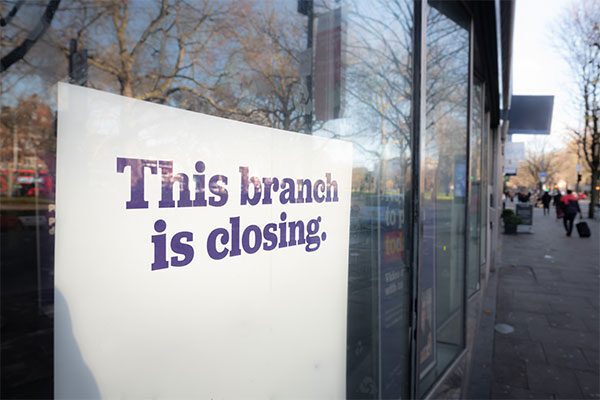At The Horton Group, we’ve received many questions regarding the recent bank failures and how those failures can potentially trigger a Directors & Officers (D&O) Liability Insurance policy. In this article, our goal is to describe what prompted the crisis and how risk management and loss avoidance ideas can further protect commercial bank customers’ balance sheets. We will also explore risk transfer strategies via D&O and potentially other types of insurance. With the fluidity of the situation and rapid changes, we are taking a snapshot in time and looking to guide our clients who rely on their banking relationships to run their businesses.
What happened?
As an introduction to this article, we’ve included a link to a good summary of how the current credit situation began:
The FAQs on Silicon Valley Bank (SVB) Collapse
U.S. commercial bank Silicon Valley Bank (SVB) collapsed on March 10, 2023, resulting in the second-largest bank failure in national history and the largest since the 2008 financial crisis. California banking regulators took control of SVB and appointed the Federal Deposit Insurance Corporation (FDIC) as the receiver. The FDIC took swift action, establishing the Deposit Insurance National Bank of Santa Clara (DINB) and transferring all insured SVB deposits to DINB.
SVB was a U.S. commercial bank that specialized in technology startup banking. It provided financing for almost half of the U.S. venture-backed technology and healthcare companies. According to the FDIC, SVB had $209 billion in total assets as of the end of 2022 and was among the top 20 U.S. commercial banks. On March 8, 2023, SVB announced that it was trying to raise $2.25 billion in capital to meet its obligations. The next day, depositors, fearing the bank was on the brink of financial insolvency, tried to withdraw approximately $42 billion in funds. This led to a run on the bank.
Experts believe that SVB’s financial issues were, in part, the result of rising interest rates, as the bank had heavily invested in U.S. treasury bonds and other debt-backed securities in 2021, which have since dropped in value as the Federal Reserve (the Fed) has raised interest rates in response to inflation. Additionally, due to the recent lack of venture capital funds, many technology startups were forced to withdraw funds held by SVB, placing additional stress on the bank.
On March 12, 2023, federal regulators announced plans to ensure SVB depositors would have full access to all their funds—not just their insured funds—by the following day. In a move to assure the public and avert a systematic banking panic, regulators approved plans to backstop depositors and financial institutions associated with SVB; however, taxpayers will not have to shoulder the losses associated with SVB’s collapse, and there will be no government bailout, according to the White House. Additionally, the U.S. Treasury Department designated SVB as a systemic risk, giving it authority to unwind the institution in a way that protects all depositors.
The Fed also announced the creation of a new Bank Term Funding Program (BTFP) to safeguard institutions affected by SVB’s collapse and resulting market instability. The BTFP will provide affected institutions—including banks, saving associations and credit unions—with loans of up to one year to help ensure they can meet their depositors’ needs.
In addition to SVB, Signature Bank, Credit Suisse and First Republic have all encountered various issues, including regulator takeovers similar to SVB, stock drops, support from other financial institutions and class action lawsuits.
One present-day consideration that wasn’t as big of an issue in the last financial crisis, and certainly prior, is the speed that information travels, coupled with the ability to use mobile banking apps to move money with a few taps of your smartphone. This reality makes a run on a bank much more likely and much faster than at any time in history.
Why is it important?
Certainly, deposit integrity is critical and being able to access cash is integral to running most businesses. In the case of SVB and Signature Bank, depositors were protected, which is a big deal. But let’s review what other business functions banks provide to businesses. The thought here is to play out the problems that customers of a failed bank may continue to confront outside of access to deposits.
What can’t many businesses do without a bank?
- They can’t fundraise because they can’t accept investments.
- They can’t get loans.
- They can’t pay back loans or redeem stock sales or redeem bonds.
- They can’t buy or sell equipment.
- They can’t pay employees.
- They can’t pay bills.
- They can’t receive payments for goods or services via credit and debit card payments.
This list is not exhaustive but demonstrates how integral banking services are to many business customers and why it’s important to think about your banking relationship from a risk management perspective, taking into consideration banking alternatives in this climate of bank stress and failures.
How do we avoid the risk of being a failed bank customer and not being able to engage in the business activities listed above?
Below are some ideas regarding risk management or risk avoidance. Each idea has positive and negative qualities, and these ideas are neither comprehensive nor completely answer the question. Still, the intent is to provide a basis for considerations regarding risk management strategies.
- Develop multiple banking relationships so that if one bank fails, you can continue to operate out of another bank (or multiple banks).
- A drawback is this may be expensive from a time and fee perspective.
- There may be inefficiencies in working with multiple banking institutions.
- Many companies and individuals are flocking to the largest banking institutions or those deemed “Too Big To Fail.”
- This cannot be ignored based on the current climate and stress on regional banks.
- Consider breaking deposits up.
- Certain “families” of banks may insure over $250K because they have separate and distinct branches where deposited funds are distributed to allow increased FDIC-insured amounts.
- Break up savings/cash into multiple institutions.
- Consider joint accounts or multiple beneficiaries to increase FDIC-insured amounts.
- Consider money market mutual fund accounts.
- Money market mutual funds (MMMFs) are securities offered by companies that invest in other money market instruments—such as commercial paper, certificates of deposit, Treasury bills and repurchase agreements (a short-term agreement to sell securities in order to buy them back at a slightly higher price).
- Once cash is converted to security, it would not be available to the banking institution in the event of bankruptcy, whereas cash would be – this protects your money from a banking crisis but opens it up to a money market crisis or lowering the value of the MMMF.
- Consider other ways to securitize assets.
- This also eliminates the cash risk over the FDIC amounts but can lead to a change in the value of your assets.
The ideas listed above are not prescriptive but can reduce the various business risks a company would confront if its bank failed.
Risk Transfer – Directors & Officers Liability Insurance and other insurance coverage
First, there are already lawsuits filed against SVB, Signature Bank and Credit Suisse. In those cases, D&O (Directors and Officers) Liability Insurance may be relevant in the context of a bank failure if there are allegations of misconduct or mismanagement by the bank’s directors or officers. In such cases, the D&O insurance policy may cover legal defense costs and potential damages for those directors and officers.
D&O insurance is a type of liability insurance that provides financial protection for entities and individuals who serve as directors or officers of a company. It is typically designed to protect against claims of wrongful acts, such as negligence or mismanagement or, for example, against allegations that a director or officer breached their fiduciary duties by keeping most or all of the company’s funds at a bank that failed.
But just to be clear, in the event of a bank failure, it is highly unlikely that a D&O insurance policy would be a source of funds for depositors.
For the rest of us who aren’t banking institutions caught up in this crisis, there is much less of a likelihood of lawsuits cascading from this situation to affect separate businesses. But let’s play make-believe and pretend for a minute that the U.S. government did not work out a deal where deposits were backstopped. There could have been a risk that shareholder lawsuits would have been filed against Executive Teams and Boards alleging a breach of fiduciary duty. In this scenario, if shareholders filed a lawsuit alleging that a director or officer breached their fiduciary duties by keeping most or all of the company’s funds at a bank that failed, a D&O insurance policy may provide coverage for the legal defense costs and potential damages.
It is unclear how successful a shareholder lawsuit would be in court. However, if a plaintiff filed a lawsuit alleging a breach of fiduciary duty or alleged that a company’s leadership didn’t do its proper due diligence in selecting a bank that failed, we would imagine there would be coverage with the caveat that D&O policies vary significantly in coverage language, terms and conditions.
Directors and Officers are required to apply a Duty of Care to their business decision-making. In this case, the duty of care is a fiduciary duty requiring a corporation’s directors and/or officers to make decisions that pursue the corporation’s interests with reasonable diligence and prudence. This fiduciary duty is owed by directors and officers to the corporation as they make decisions on behalf of the company and its shareholders.. This principle doesn’t require that the Directors and Officers make the correct decision but that they apply proper business decision processes. So, if recorded notes demonstrate that due diligence was applied when selecting a financial institution to partner with, that would likely be a sufficient defense. But in the event of negligence again, we would assume the D&O policy would respond and provide defense costs in the event of an allegation, even if frivolous.
Separately, there could be a scenario where a failed bank could prevent a company from paying its employees’ wages, which could lead to a lawsuit or a regulatory inquiry. On the wage issue, there is the question of whether this type of lawsuit would go anywhere in court. Still, it is presumable a D&O or Employment Practices Liability policy would provide a level of defense coverage until dismissal. As noted earlier in this article, insurance would not be available to pay wages or make employees whole from a loss of earnings.
Shifting from a focus on how insurance would apply to a policyholder, the summary below provides a general analysis of the crisis from an insurance company’s perspective. It makes a case for why it should have a minimal impact on insurers from several perspectives. We find this valuable to demonstrate that D&O insurers are not particularly worried about D&O lawsuits negatively impacting their balance sheets. Of course, things can change quickly.
According to AM Best, D&O insurers have been thrown a lifeline by the U.S. government’s intervention to guarantee full deposits of tech startup clients at the collapsed Silicon Valley Bank (SVB) and Signature Bank. The rating agency said D&O claims would have escalated to cause insurers “financial distress” if the government had not stepped in.
“Underwriters of directors and officers insurance for startups and venture capitalists, as well as the financial institution insureds supporting such entities, could have faced financial distress given that they are operating on very thin capital,” said David Blades, Associate Director – Industry Research and Analytics at the rating agency.
“Since startups are by nature much more agile and less risk-averse than other companies, their directors and officers often make decisions quickly. Therefore, the potential for D&O claims for startups would have been high if the government had decided not to help the depositors,” Blades added.
AM Best said insurers are not heavily exposed to the banking failures in the U.S. but urged them to learn “critical” lessons from the current crisis. Credit Suisse became the first bank to turn to emergency aid to navigate the storm as the European banking sector hit choppy waters.
“The [SVB] failure highlights for insurers the importance of managing enterprise, asset-liability and liquidity risks,” AM Best said. “SVB Financial Group appears to be a casualty of rising interest rates and insufficient risk management to address the asset/liability issues because of those rising interest rates.”
AM Best said some major bank stocks saw significant value wiped from their equity portfolios this week in the wake of the collapse of the two U.S. banks, which followed the failure of Silvergate earlier this month. Five U.S. insurers have equity exposure to the banking and trust sector greater than their capital, while 17 have exposures equal to at least half of their capital.
Insurers are less exposed to the risk of impairments on bonds, but rising interest rates will impact asset/liability portfolios if added.[1][i]
Conclusion
The key aspect of this article is that banks provide essential services to their business customers, and it is important to play out scenarios where your bank is unavailable. This line of thought considers the current banking situation. Still, it could also contemplate a scenario where a Cyberattack or other catastrophe takes out a large banking institution or your specific bank. Having a plan to employ in the event of an issue with your bank or other financial institution can be an important part of a disaster recovery or business continuity plan, providing resilience to a business that provides a livelihood to its workers while providing value to its clients and customers.
Material posted on this website is for informational purposes only and does not constitute a legal opinion or medical advice. Contact your legal representative or medical professional for information specific to your legal or medical needs.



